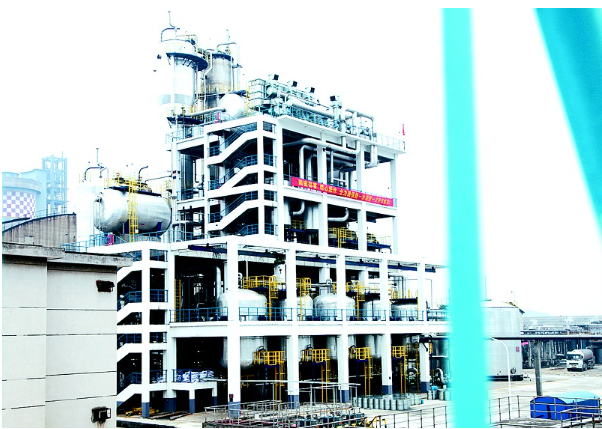Hydrogen Peroxide Plant Supplier shares with you hydrogen
peroxide related knowledge:
The substance is toxic to aquatic life.
Protective measures
Respiratory protection: A self-priming filter-type gas mask (full face mask)
should be worn when it may be exposed to its vapors.
Eye protection: Protection has been done in respiratory protection.
Body protection: Wear polyethylene protective clothing.
Hand protection: Wear neoprene gloves.
Others: Smoking is strictly prohibited on the job site. After work, take a
shower and change clothes. Pay attention to personal hygiene.
Leak handling
Quickly evacuate leaking contaminated personnel to a safe area and isolate
them to strictly restrict access. It is recommended that emergency handlers wear
self-contained positive-pressure respirators and acid- and alkali-proof work
clothes. Cut off the source of leakage as much as possible to prevent entry into
restricted spaces such as sewers and flood drains. Small leaks: Absorb with
sand, vermiculite or other inert materials. It can also be rinsed with a large
amount of water and diluted into the waste water system. Massive leakage:
constructing a dike or digging to contain; spraying water to cool and dilute the
steam, protect the site personnel, and dilute the leakage into incombustibles.
Transfer it to a tank truck or a special collector with a pump, recycle it or go
to a waste disposal site for disposal.

Fixed Bed Hydrogen Peroxide Processes
The method of waste disposal in Fixed Bed Hydrogen Peroxide
Processes: the waste liquid is decomposed after being diluted with
water, releases oxygen, and after it is fully decomposed, the waste liquid is
flushed into the sewer.
Skin contact: Remove contaminated clothing and rinse with plenty of running
water.
Eye contact: Raise the eyelids immediately and rinse thoroughly with plenty
of running water or saline for at least 15 minutes.
Inhalation: Quickly leave the scene to fresh air. Keep your airways open. If
breathing is difficult, give oxygen. If breathing stops, give artificial
respiration immediately. Seek medical attention.
Ingestion: Drink plenty of warm water, induce vomiting, and consult a
doctor.
Extinguishing methods: Firefighters must wear full-body fire and gas
protective clothing. Move the container from the fire to the open space as much
as possible. Spray water to cool the fire container until the fire is over.
Containers in the fire area must be evacuated immediately if they have
discolored or generate sound from a safety pressure relief device. Fire
extinguishing agent: water, mist water, dry powder, sand.
Packaging precautions: Large packaging: plastic drums, there should be
pressure relief valves or vents on the top of the container, at least 10% of the
remaining amount in the container, the net weight of each barrel does not exceed
50 kg. Reagent packaging: plastic bottles, then individually packed in plastic
bags, packed in calcium plastic boxes.
Risky behavior
In case of accidental drinking or enema with hydrogen peroxide, the mucous
membranes of the oral cavity or digestive tract may be eroded and cause
inflammation. In severe cases, perforation or bleeding may occur.
Injecting hydrogen peroxide will cause blood clots, easily lead to organ
necrosis, and severe cases may be life-threatening. General food processing
prohibits the use of hydrogen peroxide. Our company has Hydrogen
Peroxide Technology, welcome to consult.














